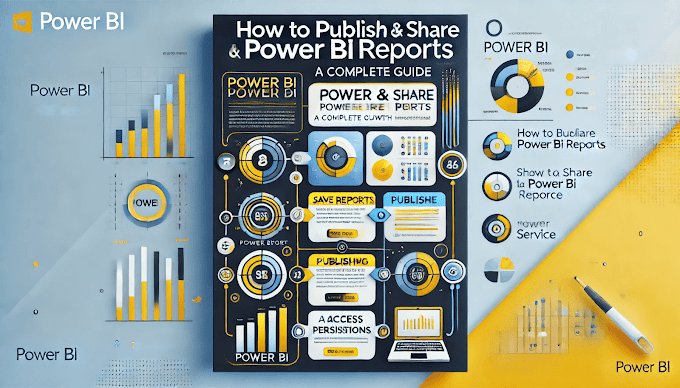Welcom back to Virvijay.com
Slow Power BI reports can be frustrating. 🚀 In this guide, you'll learn:
- ✔ Why Power BI reports become slow
- ✔ Best practices to improve Power BI performance
- ✔ How to optimize DAX queries for faster calculations
- ✔ Power Query performance tips
- ✔ Real-world examples of Power BI performance tuning
Let’s get started! 🔥
1️⃣ Why Are Power BI Reports Slow?
Common reasons include:
- 🔴 Large datasets – Too many rows and columns increase processing time
- 🔴 Complex DAX formulas – Inefficient calculations slow down reports
- 🔴 Poor data modeling – Bad relationships cause performance bottlenecks
- 🔴 Unoptimized visuals – Too many charts and tables make dashboards laggy
- 🔴 Inefficient Power Query transformations – Complex M code can slow down data refresh
✅ Solution: Follow these best practices to optimize Power BI performance.
2️⃣ Best Practices for Power BI Performance Optimization
🔹 Reduce Dataset Size
- Import only necessary columns – Avoid unnecessary fields
- Use filters in Power Query to load only relevant data
- Store aggregated data instead of raw transaction-level data
🔹 Optimize Data Model
- Use Star Schema instead of a flat table
- Avoid many-to-many relationships – They slow down calculations
- Use Lookup Tables for dimension data (e.g., Date, Products, Customers)
🔹 Speed Up DAX Calculations
- Use SUMX instead of SUM for complex row-based calculations
- Replace IF statements with SWITCH for better performance
- Use variables (VAR) to avoid repetitive calculations
🔹 Reduce the Number of Visuals
- Too many visuals slow down reports – Keep it simple & efficient
- Use aggregated tables instead of large detailed tables
- Avoid using too many slicers & filters
🔹 Optimize Power Query Performance
- Load only needed columns & rows in Power Query
- Disable auto-detect relationships in Power BI
- Use Table.Buffer() in Power Query to improve refresh speed
3️⃣ Optimizing DAX Queries for Better Performance
DAX (Data Analysis Expressions) is powerful but can slow down reports if not optimized.
🚀 Example 1: Using Variables in DAX
✅ Better approach using VAR
DAX
VAR SalesValue = SUM(Sales[TotalSales])
RETURN SalesValue * 1.1
🚀 Why?
- Avoids recalculating SUM(Sales[TotalSales]) multiple times
- Faster execution compared to inline calculations
🚀 Example 2: SUMX vs SUM
📌 SUMX is better for row-based calculations
DAX
SalesAmount = SUMX(Sales, Sales[Quantity] * Sales[Price])
🚀 Why?
- SUMX processes each row separately, making it efficient for calculated columns.
🚀 Example 3: SWITCH vs IF for Multiple Conditions
📌 Use SWITCH instead of multiple IFs
DAX
CategoryLabel = SWITCH(
TRUE(),
Sales[TotalSales] > 100000, "High",
Sales[TotalSales] > 50000, "Medium",
"Low"
)
🚀 Why?
- Faster than multiple nested IFs
- More readable & optimized for performance
4️⃣ Power Query Performance Optimization Tips
🔹 Disable Auto Data Type Detection
- Go to Options > Global > Data Load and turn off Auto Date/Time
🔹 Filter Data Early in Power Query
- Use Remove Columns & Remove Rows to clean up data before loading into Power BI
🔹 Use Buffering for Large Tables
- Use Table.Buffer() to store intermediate query results in memory
🔹 Avoid Merging Large Tables
- If possible, join tables in the database instead of Power Query
5️⃣ Real-World Examples of Power BI Performance Tuning
- ✔ Sales Dashboard Optimization – Reduced data load by filtering only last 12 months of sales
- ✔ Financial Report Speed Boost – Used aggregated tables instead of full transaction data
- ✔ E-commerce Analytics Performance Fix – Replaced nested IF statements with SWITCH
🚀 Result: Reports loaded 3x faster!
6️⃣ Summary – Power BI Performance Optimization Checklist
- ✔ Reduce Dataset Size – Import only necessary data
- ✔ Optimize Data Model – Use Star Schema & avoid complex relationships
- ✔ Improve DAX Performance – Use variables, SUMX, and SWITCH
- ✔ Speed Up Power Query – Filter early & avoid heavy transformations
- ✔ Limit Visuals & Filters – Keep dashboards lightweight
💡 Next Blogs Coming Up:
- 📌 Power BI Incremental Refresh – Improve Report Speed
- 📌 Power BI Embedded Analytics – How to Integrate with Apps
- 📌 Power BI Governance & Compliance Best Practices
📩 For queries, contact support@virvijay.com
💬 Got questions? Drop a comment below!

.jpg)

.jpg)






.png)


